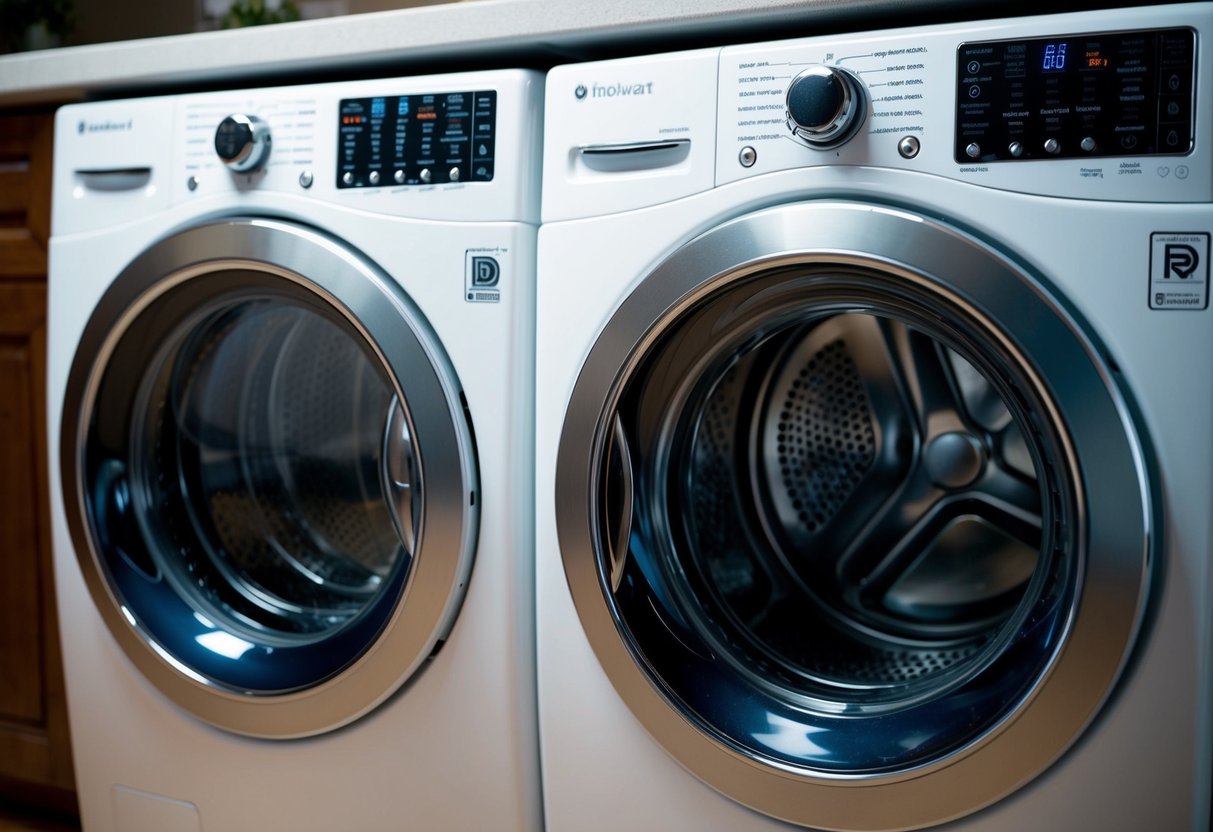Figuring out the laundry settings on your washer and dryer can often feel like trying to decode a foreign language. Each cycle setting is uniquely designed to handle specific fabric types, levels of soiling, and desired outcomes.
From delicate items that require gentle care to heavily soiled clothes that need a robust wash, understanding these options can greatly enhance the longevity of your garments. Exploring the different settings on modern appliances reveals a variety of choices, each tailored to accommodate different laundry needs.
High-efficiency and steam cycles are increasingly common, adding new dimensions to washing and drying routines. These innovations promise not only cleaner clothes but also savings in both time and resources.
For those wanting to make the most of their laundry routine, unlocking the secrets behind each setting can lead to more efficient and effective washing and drying cycles. Armed with this knowledge, selecting the right cycle becomes a straightforward task, leading to optimal care for fabrics and more predictable results.
Understanding Laundry Cycle Settings
Laundry machines come with a range of settings designed to accommodate various fabric types and soil levels. Knowing the functionality of these settings helps in protecting clothes and ensuring efficient washing and drying processes.
Standard wash settings
Standard wash settings often include Normal, Delicates, and Permanent Press. The Normal cycle uses hot water and high agitation, ideal for sturdy fabrics like cotton. Delicates cater to gentle fabrics using cold water and low agitation. Permanent Press reduces wrinkles with medium heat and slower spin speeds.
Front-load and top-load washers may offer different variations of these settings. Multi housing laundry facilities typically prioritize these cycles for their effectiveness across various clothing types.
Specialized wash cycles
Specialized cycles address specific washing needs. Heavy Duty is designed for heavily soiled items, using extended wash times. Quick Wash offers a faster cycle for lightly soiled clothes. Eco Wash minimizes water and energy consumption, beneficial in settings like apartments where efficiency matters.
Machines may also include Sanitize or Steam options to kill germs, which is especially useful for families with allergy concerns or healthcare workers. Each specialized cycle provides targeted benefits, enhancing the overall washing experience.
Drying cycles explained
Drying cycles vary between Timed Dry, Air Dry, and Sensor Dry. Timed Dry allows the user to set a specific period for drying, common in multi housing laundry. Air Dry uses unheated air and is perfect for fragile clothes that can shrink under heat.
Sensor Dry utilizes moisture sensors to adjust the drying time, preventing over-drying and saving energy. This setting is particularly suitable for mixed loads. Wrinkle-free settings will tumble clothes intermittently after the drying cycle, reducing the need for ironing. Each feature ensures clothes are cared for during the drying process.
Understanding these settings allows users to optimize clothing care while maximizing the lifespan of their garments.
Best Practices for Multi Housing Laundry Settings
Regular Maintenance: Ensuring machines are in top condition minimizes breakdowns and keeps tenants satisfied. Schedule routine checks for hoses, lint filters, and exhaust systems. This can reduce long-term repair costs.
User-Friendly Instructions: Post clear instructions next to machines. Include details on loading limits and appropriate cycle settings. Use icons and simple language to cater to diverse tenants.
Efficient Scheduling: Implement a reservation system to manage usage. This prevents overcrowding and reduces wait times, creating a smoother experience for everyone.
Energy Efficiency: Opt for energy-efficient models to save on utility costs. Look for washers and dryers with an ENERGY STAR rating. This not only cuts expenses but also appeals to eco-conscious residents.
Security Measures: Install surveillance cameras in laundry rooms to enhance safety. Well-lit environments deter theft and vandalism, promoting better peace of mind.
Payment Systems: Offer versatile payment options such as card systems and mobile apps. This provides convenience, as not all tenants carry coins.
Ventilation and Cleanliness: Ensure the area is well-ventilated to reduce humidity and mold growth. Regularly clean floors and surfaces to maintain hygiene.
Feedback Mechanism: Encourage tenants to provide feedback on laundry facilities. This helps identify issues early and fosters a responsive management approach.
Do multi housing laundry units run basically the same as washers and dryers for regular homes?
Multi-housing laundry units, such as those found in apartment complexes or laundromats, generally operate on similar principles to washers and dryers designed for regular homes. However, there are some key differences to consider:
Durability and Capacity: Multi housing units are typically built to withstand more frequent use and may have larger capacities to handle bigger loads of laundry.
Coin or Card Operation: Many multi housing laundry units are equipped with coin or card-operated systems, allowing users to pay per use.
Maintenance and Service: These units often come with service contracts for regular maintenance and prompt repairs, ensuring they remain functional despite heavy usage.
Energy Efficiency: Multi housing units may be more energy-efficient to reduce operating costs and environmental impact, given their high usage rates.
Despite these differences, the core functions of washing and drying clothes remain the same. Both types of units will have cycles for washing, rinsing, and spinning, as well as drying cycles with various heat settings.









2 Comments
pin-up casino giris: pin up – pin up azerbaycan
http://pinupaz.top/# pin-up casino giris